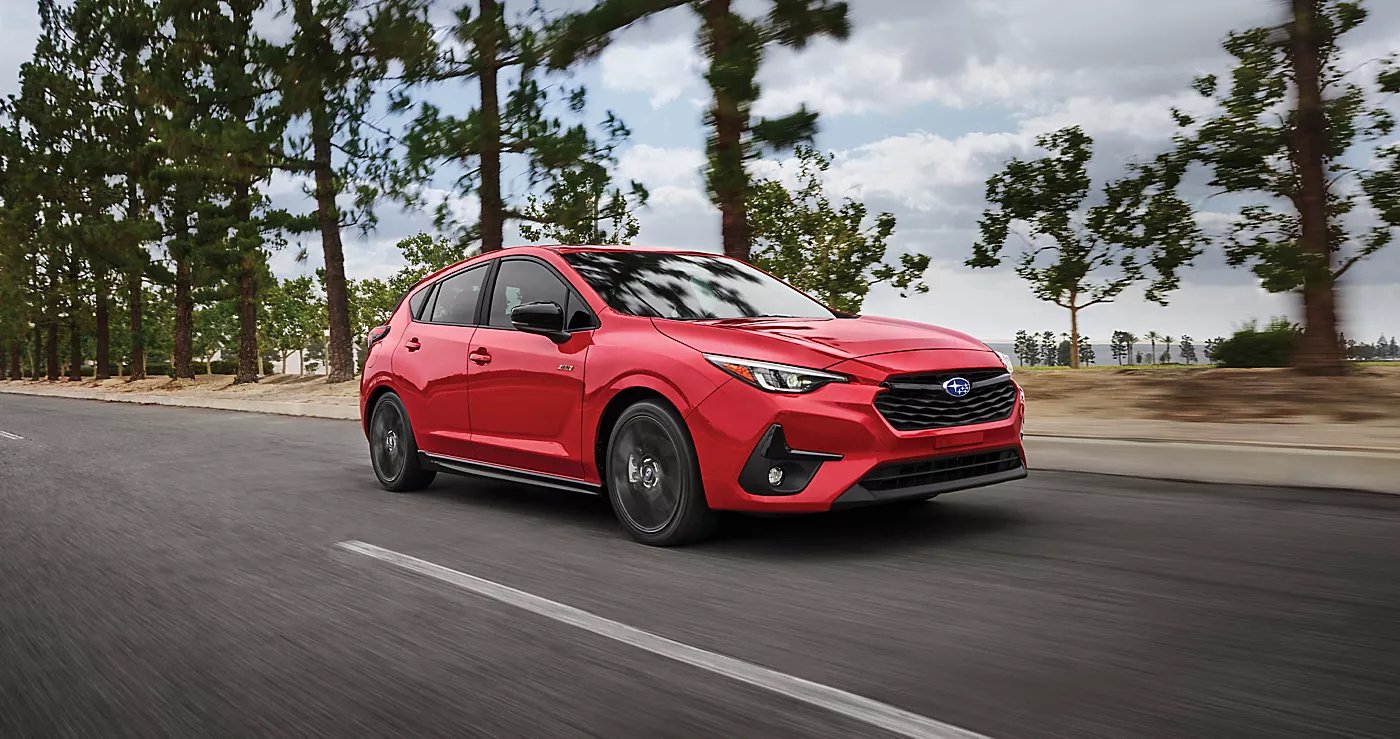Modern cars are increasingly outfitted with technology that prioritizes driver comfort and safety. Features like auto-dimming rearview mirrors have become almost standard, providing drivers with a more pleasant driving experience, especially at night when headlights from behind can create significant glare.
But despite this, some vehicles still rely on the old-fashioned manual rearview mirror, requiring the driver to physically flip a tab to switch between day and night modes. While auto-dimming mirrors have become widely popular, there are still certain cars, often in their more basic trims, that use the traditional manual option.
For many, this might not seem like a huge issue, but for those who frequently drive at night or in areas where headlight glare from trailing cars is common, it can become a noticeable inconvenience.
This list explores 10 cars that still use non-dimming rearview mirrors, highlighting how the omission can affect the driving experience, especially for those who expect modern conveniences to be included in even the most basic models. Some of these vehicles offer auto-dimming mirrors on higher trims or as part of package options, but for entry-level buyers, it’s a glaring (pun intended) omission.
Let’s dive into the cars that haven’t adopted the auto-dimming mirror as standard, and why that might be the case. While auto-dimming mirrors aren’t prohibitively expensive, manufacturers sometimes decide to exclude them to keep costs low in their most budget-friendly models.
However, this trade-off can leave drivers with fewer options for comfort and convenience, especially for those who plan to use their cars for daily commuting or long-distance driving.
Also Read: Why Mechanics in Remote Villages Prefer These Specific Engines
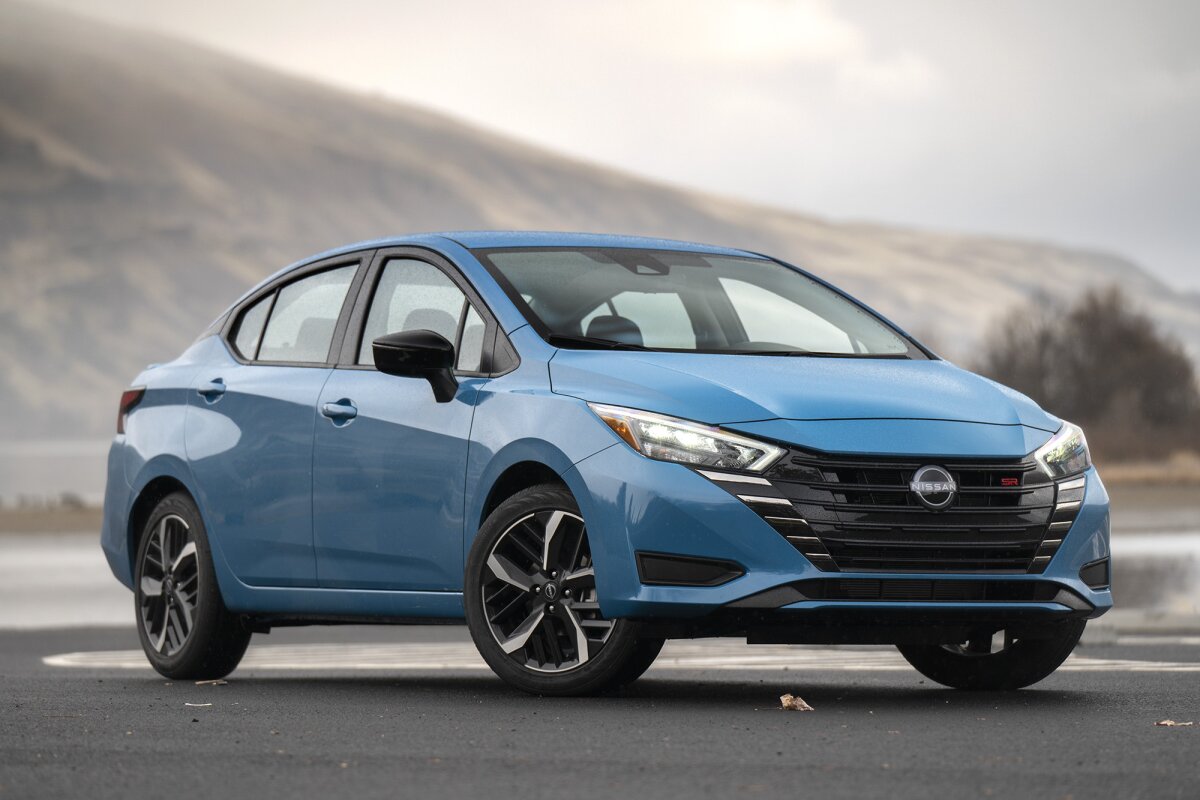
1. Nissan Versa
The Nissan Versa has long been regarded as one of the most affordable compact sedans available. Its base model, the Versa S, offers an impressively low starting price, making it an attractive option for first-time car buyers, students, or those who simply need an economical vehicle.
However, as is often the case with budget vehicles, there are some compromises when it comes to features. One of the most noticeable omissions is the rearview mirror.
Despite the impressive array of technology and safety features available in other areas of the Versa, such as automatic emergency braking and lane departure warning, the base model still comes equipped with a non-dimming rearview mirror.
For many buyers, the lack of an auto-dimming mirror might seem like a small issue, but for those who frequently drive at night, the inconvenience can add up quickly. The traditional flip-tab mirror requires the driver to manually adjust the mirror to avoid being blinded by the headlights of cars behind them.
In a world where even entry-level cars are expected to come with some level of modern comfort, the absence of an auto-dimming mirror feels like an outdated feature.
While higher trims, such as the SV and SR, do offer more advanced technology options and upgrades—including optional tech packages that can include auto-dimming mirrors, the base Versa continues to cater to those seeking the lowest price point, often at the cost of certain amenities.
This approach is typical for many budget-friendly vehicles, but it does mean that anyone who’s planning on doing a lot of night driving in the Versa may want to consider upgrading or adding this feature through aftermarket solutions.
Nissan has done a great job of offering other tech and safety features in the Versa, which is why the omission of such a simple feature like an auto-dimming mirror stands out.
Many other cars in the same price range, including the Hyundai Accent and Kia Rio, offer the auto-dimming mirror even in their base trims. The Versa’s manual mirror is yet another reminder that cost-cutting decisions can sometimes impact the driving experience, especially for those who expect a modern car to come equipped with the latest conveniences.
For drivers who mostly use the Versa for short commutes or city driving, this might not be a dealbreaker. However, those who frequently drive longer distances at night may find the absence of an auto-dimming mirror a significant downside.
Despite this, the Versa’s value as a basic, affordable sedan remains strong, but it might be worth considering higher trims or aftermarket accessories to get a more comfortable driving experience.
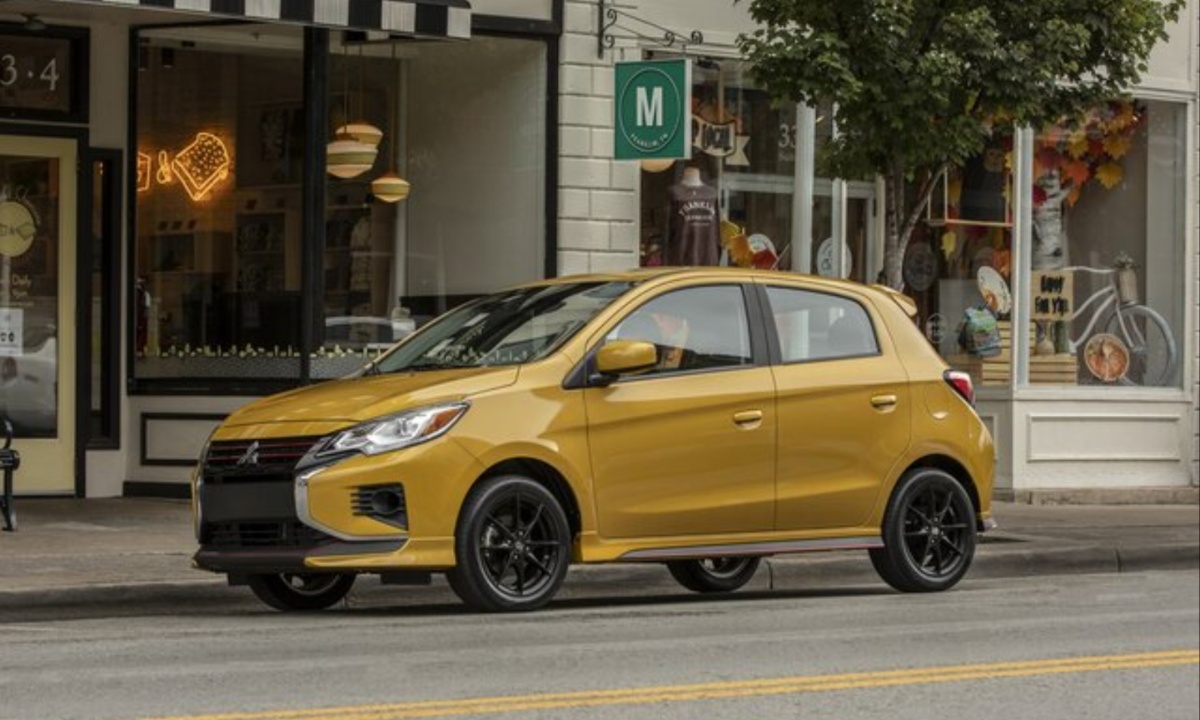
2. Mitsubishi Mirage
The Mitsubishi Mirage is known for its extreme affordability, offering one of the lowest starting prices in the automotive market. While the car excels in offering a no-frills, practical solution for those looking to get from point A to point B, the basic model is very stripped down.
At this price point, Mitsubishi has made several choices to keep the vehicle’s cost low, and one of those choices is the continued use of a manual rearview mirror. Like the Nissan Versa, the Mirage is marketed as an entry-level vehicle, and it clearly reflects that ethos, with limited advanced features.
The manual mirror, which requires the driver to manually flip a tab for night driving, might seem like a minor issue, but for those who often find themselves on highways or rural roads at night, it can be a bit of a nuisance.
The rearview mirror is one of those features that we don’t always think about until we need it, and when you’re being blinded by headlights in the rearview, the lack of an auto-dimming mirror becomes a glaring problem. It’s a small but significant inconvenience for night drivers who regularly experience glare from other vehicles.
What sets the Mirage apart from other vehicles in its class, however, is its extraordinary fuel efficiency and low starting price. Mitsubishi has made a conscious decision to prioritize these elements, offering buyers a reliable, inexpensive car with great gas mileage and low ongoing costs.
For many buyers, these qualities will outweigh the missing auto-dimming mirror. However, if you’re someone who regularly drives long distances, especially on highways at night, the lack of this feature could be a dealbreaker.
Unlike other vehicles in the Mirage’s price range, Mitsubishi doesn’t offer an auto-dimming mirror as an optional upgrade, even in higher trims. The Mirage is designed to be as affordable as possible, and much of the vehicle’s pricing is achieved by stripping away non-essential features.
The manual mirror is just one example of how the company has kept costs down. While this makes the Mirage one of the most affordable vehicles available, it also means that some basic comforts are sacrificed for the sake of price.
Ultimately, the Mirage is a car best suited for those who value practicality, simplicity, and price above all else. If you’re considering the Mirage as your next car, it’s important to weigh the value of saving money against the potential discomfort of manual mirrors on nightly commutes.
For those who plan to drive mainly during the day or in urban areas, this may not be a major issue. But for those who frequently encounter nighttime driving, it’s worth exploring other options or adding an aftermarket solution.
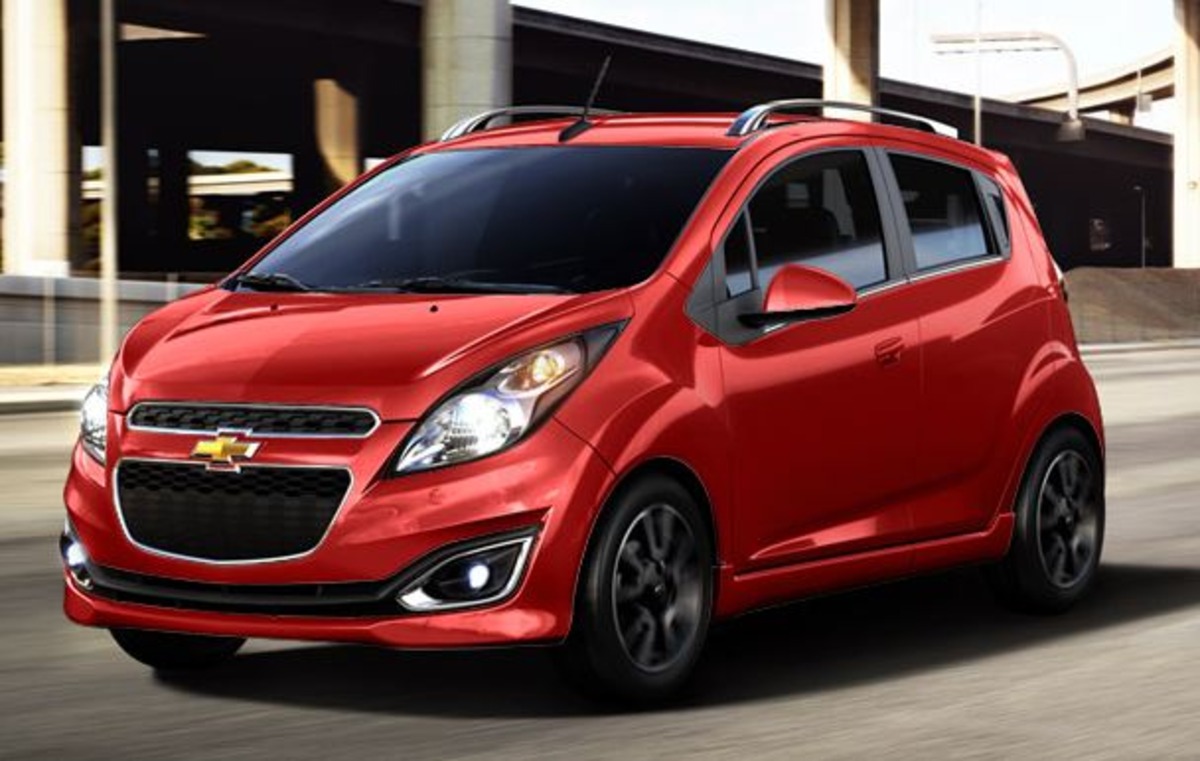
3. Chevrolet Spark
The Chevrolet Spark is another example of a highly affordable, no-frills compact car that places an emphasis on value. Known for its tight size, the Spark is perfect for urban environments, offering excellent maneuverability and low operating costs. However, like other budget models, it sacrifices a few comforts, and one of those sacrifices is the non-dimming rearview mirror.
In the base Spark model, the rearview mirror lacks the auto-dimming feature found in many competitors. This means that drivers must rely on the manual adjustment tab, which is not only less convenient but also less effective at reducing glare during nighttime driving.
When the headlights of other vehicles are shining directly into the rearview, this can become a significant distraction, reducing visibility and making long night drives less comfortable.
The lack of an auto-dimming mirror is particularly noticeable when comparing the Spark to other small cars in the same price range. Cars like the Hyundai Accent and Kia Rio offer this feature in even their most basic trims, making the Spark feel a bit behind in terms of comfort and technology.
While the Spark offers great value in other areas, such as its excellent fuel efficiency and compact design, it falls short in providing basic nighttime driving conveniences.
Chevrolet offers the auto-dimming mirror in higher trims or through optional packages, but these upgrades may not be available in the Spark’s entry-level pricing. For those who are on a tight budget, upgrading or opting for aftermarket solutions could be an extra cost that some buyers might not be willing to incur.
The Spark continues to cater to a specific demographic that values price and practicality over luxury features, but it does come with some drawbacks.
In summary, the Chevrolet Spark is an excellent car for buyers who prioritize cost, efficiency, and maneuverability in urban settings. However, if you plan to drive long distances at night or frequently find yourself on highways, the lack of an auto-dimming mirror can detract from the driving experience.
Like other cars on this list, it’s a trade-off between price and comfort, and it may be worth considering if an upgraded trim or aftermarket accessory would be worth the investment.
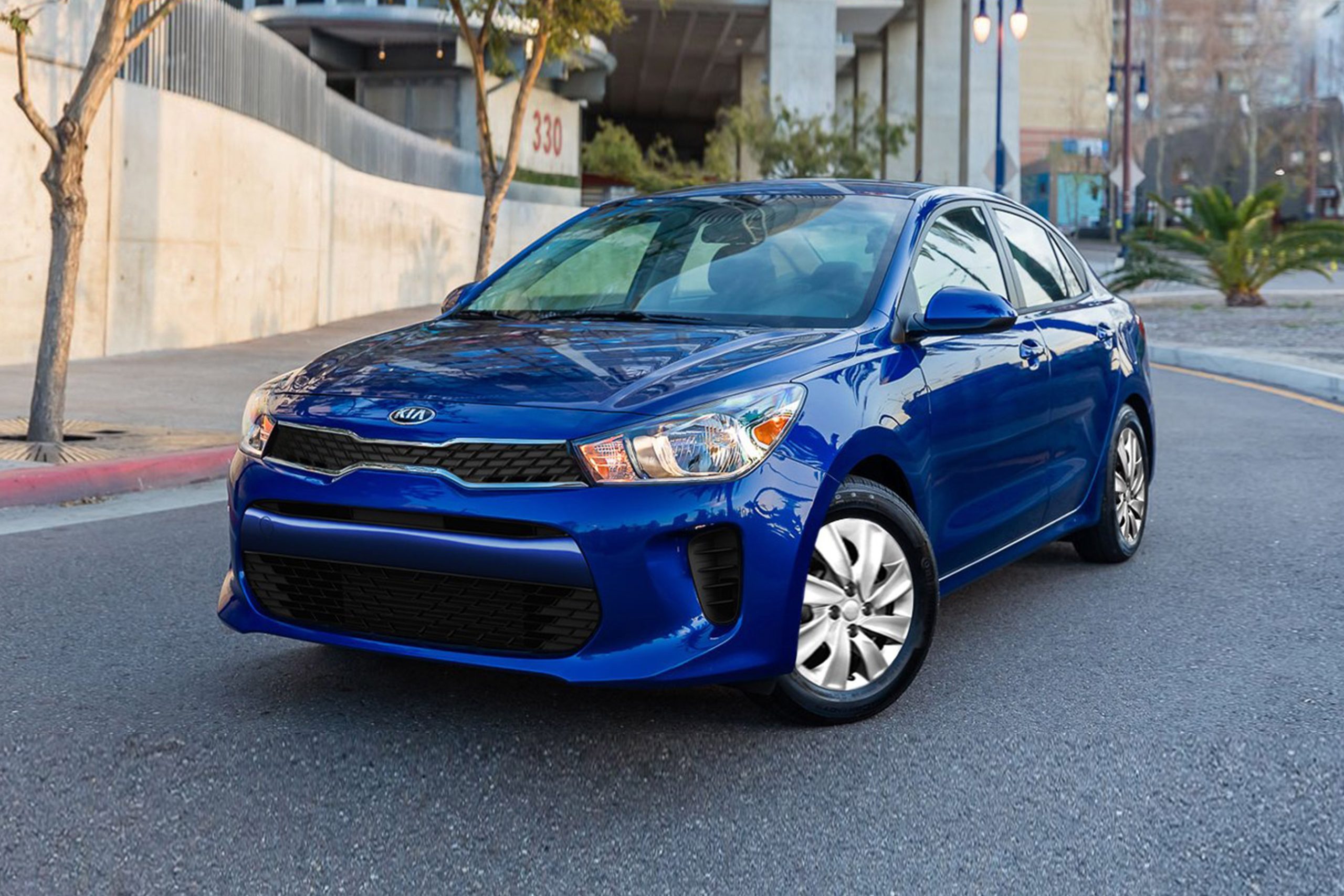
4. Kia Rio
The Kia Rio is a popular subcompact car that has earned a reputation for offering a good balance of features, quality, and affordability. However, in its base LX trim, Kia has made a decision to leave out some of the luxury features that are found in more expensive cars, and one of those omissions is the auto-dimming rearview mirror.
For those used to the comfort of an automatic dimming mirror, this can feel like a significant step backward, especially when driving at night on highways or poorly lit streets.
The lack of an auto-dimming mirror may seem like a small issue, but it’s a problem that can lead to significant discomfort. When driving at night, headlights from behind can be overwhelming, and manually adjusting the mirror can take your focus off the road.
The need to frequently adjust the mirror to avoid being blinded by trailing vehicles can be distracting, especially during long commutes or road trips. Despite the fact that the Rio offers many tech-savvy features such as Apple CarPlay and Android Auto, the omission of this simple comfort feature feels out of place.
In higher trims, such as the S or EX, the Kia Rio does offer more advanced technology features, including an auto-dimming mirror.
However, the base trim LX, which is priced lower to make it more affordable, continues to come with the traditional manual mirror, which requires the driver to flip a tab for night mode.
While the Rio’s pricing is competitive for its segment, many competing subcompact vehicles like the Hyundai Accent or Toyota Yaris offer the auto-dimming mirror even in base models, making the omission more noticeable.
For buyers looking for a well-rounded, budget-friendly car, the Kia Rio remains a great option. It offers excellent fuel efficiency, a comfortable ride, and a decent amount of tech in higher trims. However, for those who do a lot of night driving or live in areas with a lot of traffic, the lack of an auto-dimming mirror in the base model might be a minor frustration.
Fortunately, Kia does offer it in higher trims or as part of an upgrade, so drivers who find this feature essential can look into moving up to the next trim level.
The Kia Rio is an excellent choice for those who are primarily looking for an affordable, reliable, and feature-packed car. However, the manual rearview mirror serves as a reminder that some of the small comforts of driving are sacrificed for the sake of keeping costs down in the base model. If comfort is important, it might be worth considering an upgrade or aftermarket options for a smoother driving experience.

5. Hyundai Accent
The Hyundai Accent, another competitor in the subcompact car category, is known for its practicality, efficiency, and relatively low starting price. However, like its competitors, the Accent’s base SE trim does not include the modern comfort feature of an auto-dimming rearview mirror.
Instead, it sticks with the traditional manual mirror, which requires the driver to manually adjust the tab to switch between day and night modes. While this might seem like a minor inconvenience to some, for frequent night drivers, it can be a source of frustration.
The decision to exclude the auto-dimming mirror in the base trim aligns with Hyundai’s strategy of keeping the price of the Accent low for budget-conscious consumers.
While the vehicle offers a solid range of standard features such as Apple CarPlay, Android Auto, and a rearview camera, the omission of the auto-dimming mirror highlights how even small comforts are sometimes sacrificed for the sake of cost savings.
Many drivers may not miss this feature, but those who regularly drive at night will certainly notice the difference when they have to deal with constant headlight glare from other vehicles.
Interestingly, Hyundai does include the auto-dimming mirror in higher trims like the SEL or Limited. In these trims, drivers can benefit from added comfort features, including a dimming mirror, making long drives at night more comfortable and less stressful. However, for those who are buying the Accent specifically to save money, these added conveniences come at a price. The higher trims are significantly more expensive, and many buyers may prefer to stick with the base model to keep their monthly payments low.
Despite this, the Accent remains a solid choice for anyone seeking an affordable, no-frills vehicle. It’s easy to drive, fuel-efficient, and packed with features that make it an attractive option for city dwellers or anyone who needs a reliable car on a budget.
However, if you’re planning on taking longer trips, especially at night, the lack of an auto-dimming mirror might cause some discomfort. As with other vehicles in this price range, it’s worth considering upgrading to a higher trim or purchasing an aftermarket solution if comfort is a priority.
In conclusion, while the Hyundai Accent is an excellent subcompact car that offers great value for the money, the manual rearview mirror can detract from the experience for those who frequently drive at night. The auto-dimming mirror is a small but valuable feature that can make a big difference in comfort, and it’s something to consider if you’re in the market for an entry-level vehicle.
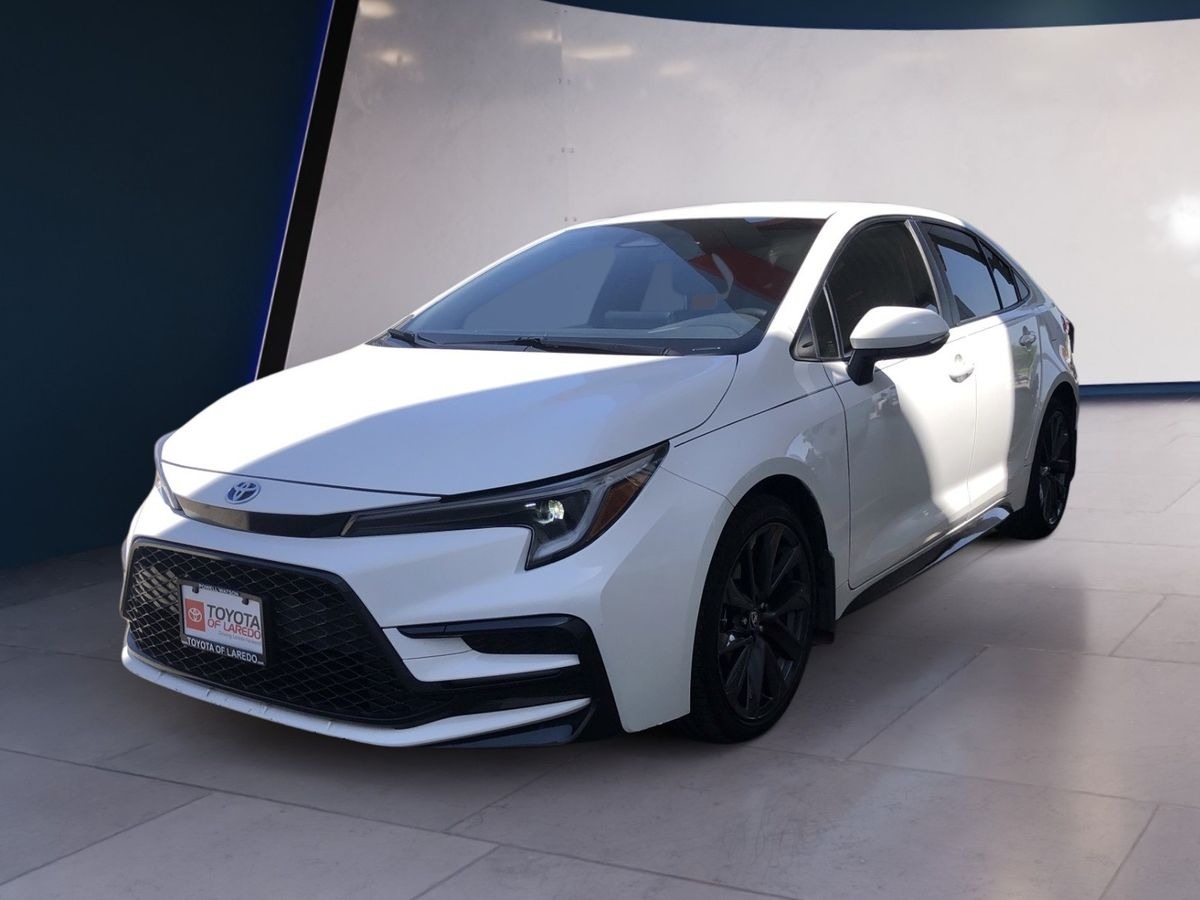
6. Toyota Corolla (L and LE trims)
The Toyota Corolla is one of the most popular and well-known compact cars in the world, known for its reliability, fuel efficiency, and excellent resale value. However, in the L and LE trims, which are the entry-level versions of the Corolla, the car continues to use a manual rearview mirror instead of an auto-dimming version.
This is surprising considering the Corolla’s reputation for offering a strong balance of comfort and technology in its higher trims. Despite the presence of advanced safety features such as Toyota Safety Sense, the L and LE trims lack the convenience of an auto-dimming mirror.
For many Corolla buyers, the lack of an auto-dimming mirror may not be a dealbreaker, especially if they mostly drive during the day or in urban areas where glare from other vehicles is less of an issue.
However, for those who frequently drive on highways at night, the constant need to manually adjust the rearview mirror to avoid headlights can become a distraction. When driving long distances at night, the glare from behind can make it difficult to see ahead, and manually flipping the mirror is an inconvenient solution.
In higher trims, such as the SE, XSE, and Hybrid, Toyota does include an auto-dimming mirror as part of the standard equipment or as part of optional packages.
These trims also come with additional comfort features, such as a larger touchscreen display, upgraded audio systems, and more luxurious interiors. However, this upgrade comes at a higher price point, and buyers who are looking for an affordable Corolla will still be stuck with the traditional mirror in the lower trims.
Despite the manual mirror, the Toyota Corolla remains one of the most reliable cars on the market. It offers excellent fuel efficiency, a smooth ride, and an impressive list of standard safety features. For buyers who prioritize reliability over luxury, the Corolla continues to be a top choice.
However, if driving comfort is important, especially for those who find themselves frequently driving at night, an upgrade to a higher trim or an aftermarket auto-dimming mirror might be worth considering.
The Toyota Corolla is a solid choice for those looking for an affordable, reliable compact car. However, the lack of an auto-dimming mirror in the base trims can detract from the driving experience, particularly for those who spend a lot of time on the road after dark. Whether this is a minor inconvenience or a major downside depends on the individual driver’s needs.

7. Subaru Impreza (Base Trim)
The Subaru Impreza is well-known for its all-wheel-drive capabilities, making it an excellent choice for those living in areas with harsh winters or rough terrain. However, in the base trim, the Impreza still comes equipped with a manual rearview mirror, despite Subaru’s reputation for including advanced safety and technology features in many of its vehicles.
This decision is particularly surprising considering the company’s strong focus on creating vehicles that offer both safety and convenience, especially for those who need a reliable car for adverse conditions.
The absence of an auto-dimming mirror in the base Impreza is a noticeable omission, particularly for those who frequently drive on highways or rural roads at night.
While Subaru’s EyeSight Driver Assist Technology package is standard in the base model, which includes features like adaptive cruise control and lane-keep assist, the manual mirror remains a small yet significant drawback. As with other cars on this list, the need to adjust the mirror manually to avoid headlight glare is both distracting and uncomfortable for many drivers.
In higher trims such as the Premium or Sport, Subaru does include more advanced features, including an auto-dimming mirror, which helps improve the nighttime driving experience. These trims also come with additional comfort features such as a larger touchscreen display and upgraded interior materials.
However, these upgrades come at a higher cost, and many budget-conscious buyers may choose to stick with the base model to save money.
Despite this, the Subaru Impreza remains a strong contender in the compact car segment, especially for buyers looking for a vehicle with all-wheel drive. The Impreza offers great value, solid handling, and excellent safety features, making it a popular choice for those who live in areas with inclement weather.
However, if you find yourself driving frequently at night, the lack of an auto-dimming mirror might detract from the driving experience. Like other cars in this segment, Subaru offers the option to upgrade to a higher trim or purchase an aftermarket auto-dimming mirror.
In conclusion, the Subaru Impreza is an excellent car for those who need all-wheel drive and reliable performance. However, for those who want the comfort of an auto-dimming mirror, it’s worth considering an upgrade to a higher trim or adding the feature through aftermarket solutions.

8. Honda Fit (Base Trim)
The Honda Fit has earned its reputation as one of the most versatile and practical subcompact cars on the market. With its distinctive design, spacious interior, and impressive fuel economy, the Fit has become a favorite among urban dwellers and those looking for a small, efficient vehicle.
However, despite its many positive qualities, the base LX trim still comes with a manual rearview mirror rather than an auto-dimming one. This may not seem like a major issue at first glance, but for drivers who regularly travel at night or on poorly lit roads, it can significantly detract from the driving experience.
Honda has designed the Fit to be an affordable, no-frills option for those who want a compact car that offers a lot of interior space for its size. The base trim includes a suite of standard features, such as a rearview camera and a 5-inch display, but the absence of an auto-dimming mirror stands out.
The traditional manual mirror requires the driver to flip a tab to adjust it for night driving, which can be distracting when trying to avoid the glare from headlights behind. This small inconvenience may not be a dealbreaker for some, but it certainly detracts from the convenience that many drivers expect in modern cars.
Interestingly, higher trims such as the Sport, EX, and EX-L do include more premium features, including an auto-dimming rearview mirror. These trims offer a broader array of technology features, such as Apple CarPlay, Honda Sensing safety tech, and upgraded interior materials.
For those who are willing to pay a little more, these higher trims provide a more comfortable and feature-rich experience. However, for those on a budget who opt for the base LX trim, the lack of an auto-dimming mirror remains a notable omission.
The Honda Fit remains an excellent choice for those looking for a practical, affordable subcompact car. Its flexible interior, good handling, and excellent fuel economy make it a standout in its class. However, if driving comfort is a priority, especially for those who regularly commute or travel at night, the lack of an auto-dimming mirror in the base trim might be a drawback.
As with other vehicles on this list, upgrading to a higher trim or installing an aftermarket solution may be worthwhile for those seeking added comfort on the road.
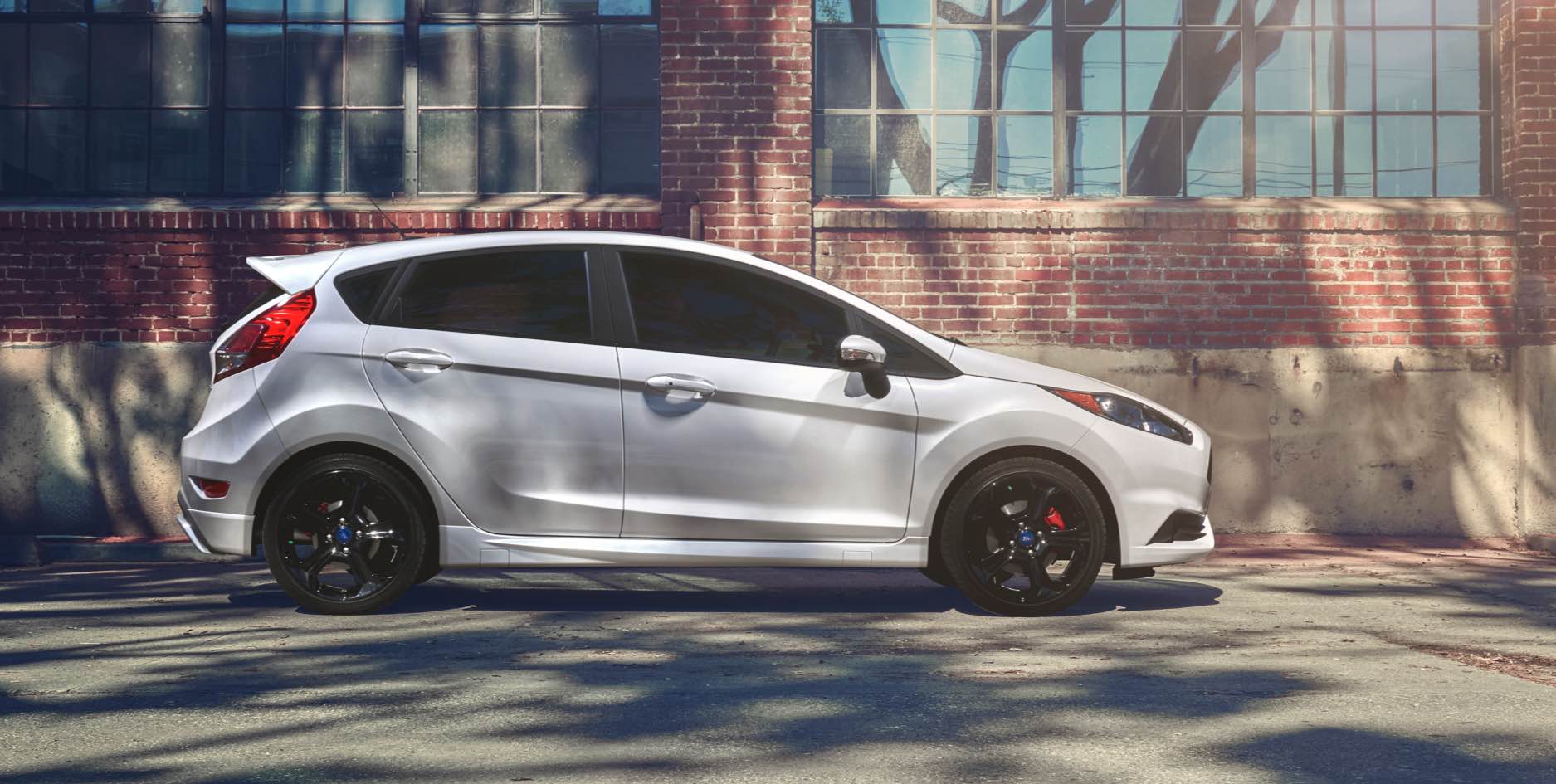
9. Ford Fiesta (Base Trim)
The Ford Fiesta is another well-known subcompact car that offers a fun-to-drive experience with sporty handling and an affordable price tag. However, in the base S trim, the Fiesta still comes with a manual rearview mirror, which requires the driver to adjust it manually to switch between day and night modes.
While this may not be a significant issue for some drivers, those who spend a lot of time on highways at night may find it frustrating to deal with the constant glare from other vehicles’ headlights.
Ford has designed the Fiesta to be an entry-level car that provides excellent value for the money. The base S trim offers features such as a 4.2-inch display, Bluetooth connectivity, and a rearview camera, but it leaves out many of the modern conveniences that drivers have come to expect.
The lack of an auto-dimming mirror is one of the most noticeable omissions. For drivers who frequently commute on highways or rural roads, the lack of a dimming mirror can make long trips uncomfortable, as the glare from trailing vehicles can significantly reduce visibility and cause eye strain.
The good news is that higher trims, such as the SE, Titanium, and the ST performance mode,l do offer an auto-dimming mirror, but these models come at a higher price point.
For those looking to maintain a lower price tag, the base Fiesta remains an affordable option, but it comes with fewer luxury features. Ford has made a clear decision to prioritize cost savings and affordability in the base model, which often means stripping away certain comforts, such as the auto-dimming mirror.
Despite the lack of an auto-dimming mirror in the base trim, the Ford Fiesta is still a solid choice for those who prioritize affordability, handling, and fun driving dynamics. It’s an excellent car for city driving, and the available turbocharged engine in the higher trims offers more performance for those looking for a sportier option.
However, for those who do a lot of night driving, the absence of the auto-dimming mirror can detract from the driving experience. As with other cars on this list, upgrading to a higher trim or installing an aftermarket auto-dimming mirror could be a good solution for those who want added comfort during nighttime driving.
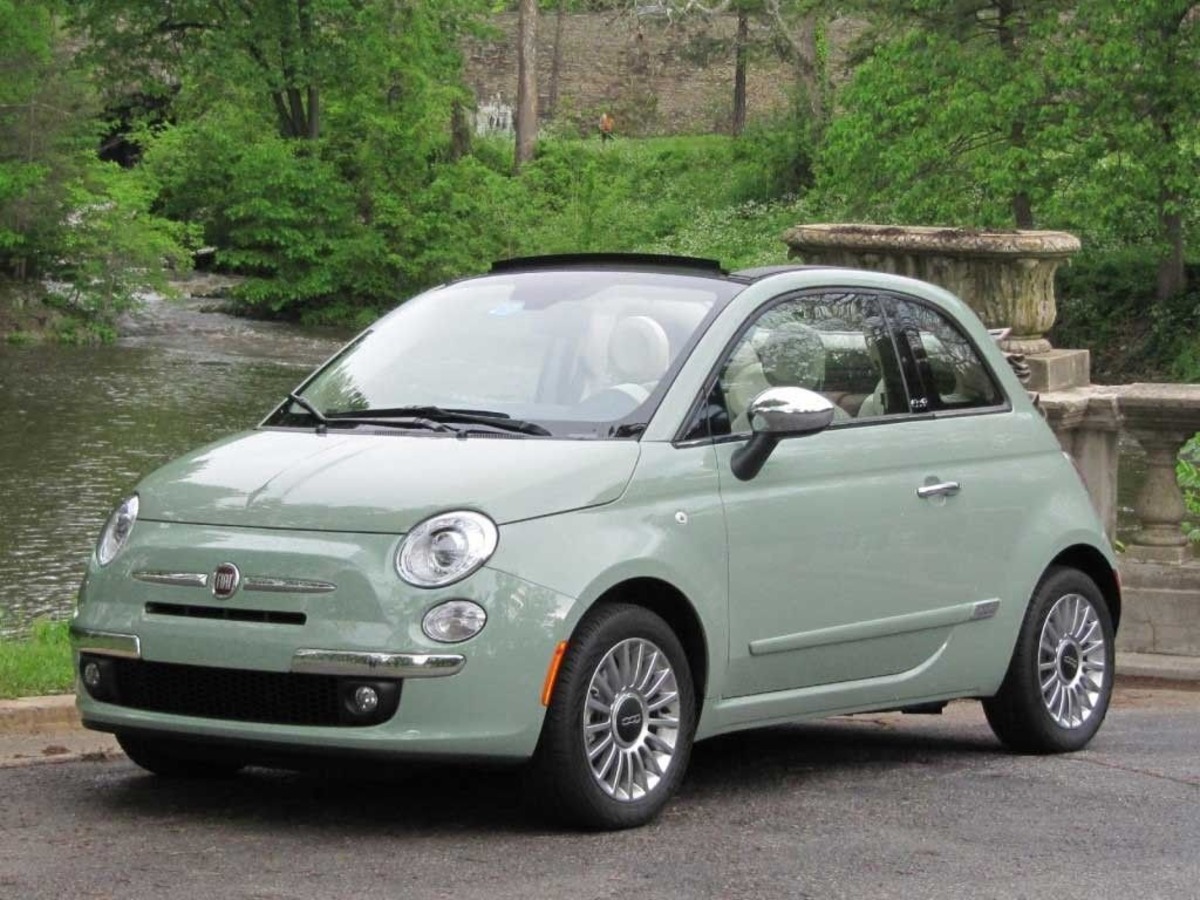
10. Fiat 500
The Fiat 500 is a small, quirky city car that has a lot of personality. Known for its stylish design and compact size, the 500 is perfect for navigating tight urban spaces and offering a unique driving experience.
However, despite its appeal, the base Pop trim still comes with a manual rearview mirror, which means that drivers must adjust it manually to switch between day and night modes.
While this might not be a huge deal for some drivers, for those who frequently drive at night or on dark roads, the absence of an auto-dimming mirror can be a notable inconvenience.
The Fiat 500 is marketed as an affordable and fun-to-drive vehicle, but like many small cars, it comes with a stripped-down base trim. The manual rearview mirror is just one of the features that reflect the vehicle’s budget-conscious design.
While higher trims such as the Lounge or Sport offer more luxurious features like leather upholstery, a larger touchscreen, and an upgraded audio system, the base model is designed to be as affordable as possible. The auto-dimming mirror is not available in the base trim, which can be disappointing for those who are used to the comfort of this feature in other vehicles.
The Fiat 500 is best suited for city driving and short commutes, and for many drivers, the lack of an auto-dimming mirror might not be a major issue. However, for those who frequently drive on highways or rural roads, the constant need to adjust the mirror can be distracting, especially during nighttime driving.
The vehicle’s compact size and fun driving dynamics make it a great option for city dwellers who prioritize style and ease of use over long-distance comfort.
In summary, while the Fiat 500 offers a lot of style and personality, it falls short in terms of modern conveniences like the auto-dimming rearview mirror, especially in the base Pop trim.
For those who primarily use the car for short urban trips, this might not be a significant problem. However, for long-distance drivers or those who frequently drive at night, it’s worth considering a higher trim or looking into aftermarket solutions to enhance comfort on the road.
Also Read: You Can Still Buy This 1980s Engine Brand New From the Factory
The auto-dimming rearview mirror is a simple feature, yet it can make a huge difference in improving the driving experience, especially for night drivers. Unfortunately, many budget-friendly vehicles still offer the manual version, requiring drivers to manually adjust the mirror and deal with glare from headlights behind them.
This is particularly noticeable in entry-level trims, where manufacturers often cut costs to keep the vehicle affordable. While these cars still offer good value in other areas, the lack of an auto-dimming mirror in these base models highlights how small comfort features can sometimes be overlooked.
As car buyers become more accustomed to the comforts of modern vehicles, including safety technology and driver assistance systems, the absence of features like an auto-dimming mirror becomes more apparent.
Fortunately, many of the vehicles mentioned here offer the auto-dimming mirror in higher trims, or it can be added as an aftermarket solution. For those who spend a lot of time driving at night, investing in this feature might be worth the upgrade.
In conclusion, while these vehicles represent the more affordable end of the spectrum, drivers should consider their nighttime driving needs when choosing a trim.
The base models might save money upfront, but come with the trade-off of fewer comfort features. If night driving is a regular part of your routine, it may be worth considering a higher trim or adding an auto-dimming mirror after purchase for a more comfortable experience on the road.

